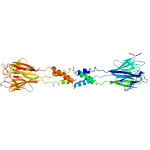Hindsight: Resisting Resistin
Saturday, April 14, 2012In 2001, Mitch Lazar’s group at the University of Pennsylvania reported a new protein secreted from fat cells that they called resistin, because increased levels of this protein apparently induced insulin resistance in mice.
This prompted many laboratories, including mine, to measure resistin and explore its expression in humans.
In a paper we published in OBESITY RESEARCH (now called OBESITY) in January of 2002, we examined resistin gene expression in primary cultured human adipocytes and preadipocytes. We also examined resistin gene expression in subcutaneous abdominal adipocytes in 24 women with a wide range of body weight and insulin sensitivity.
While resistin gene expression was barely detectable in mature adipocytes, it was highly expressed in preadipocytes. In fact, we showed that adipogenic differentiation of preadipocytes was associated with a time-dependent down-regulation of resistin gene expression.
In our clinical study, we found absolutely no relationship between body weight, insulin sensitivity, or other metabolic parameters and adipocyte resistin gene expression.
Obviously, these findings very much tempered our (and perhaps other researchers’) interest in this molecule.
While controversies about whether or not resistin plays any relevant role in the development of insulin resistance or type 2 diabetes continues to brew – there is certainly some data showing that resistin expression may be particularly high in visceral adipose tissue.
Clearly, however, this molecule was perhaps not quite the ‘breakthrough’ that it might have been with regard to explaining the link between obesity and diabetes.
According to Google Scholar, this paper has been cited 330 times.
AMS
Edmonton, Alberta



